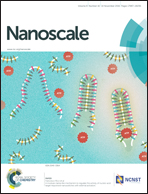Evolutionary design of interfacial phase change van der Waals heterostructures†
Abstract
We use an evolutionary algorithm to explore the design space of hexagonal Ge2Sb2Te5; a van der Waals layered two dimensional crystal heterostructure. The Ge2Sb2Te5 structure is more complicated than previously thought. Predominant features include layers of Ge3Sb2Te6 and Ge1Sb2Te4 two dimensional crystals that interact through Te–Te van der Waals bonds. Interestingly, (Ge/Sb)–Te–(Ge/Sb)–Te alternation is a common feature for the most stable structures of each generation's evolution. This emergent rule provides an important structural motif that must be included in the design of high performance Sb2Te3–GeTe van der Waals heterostructure superlattices with interfacial atomic switching capability. The structures predicted by the algorithm agree well with experimental measurements on highly oriented, and single crystal Ge2Sb2Te5 samples. By analysing the evolutionary algorithm optimised structures, we show that diffusive atomic switching is probable by Ge atoms undergoing a transition at the van der Waals interface from layers of Ge3Sb2Te6 to Ge1Sb2Te4 thus producing two blocks of Ge2Sb2Te5. Evolutionary methods present an efficient approach to explore the enormous multi-dimensional design parameter space of van der Waals bonded heterostructure superlattices.


 Please wait while we load your content...
Please wait while we load your content...